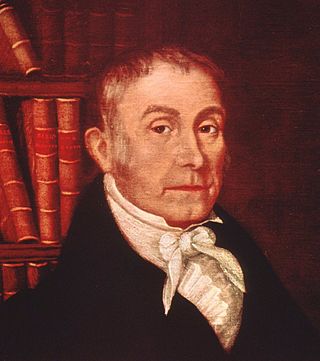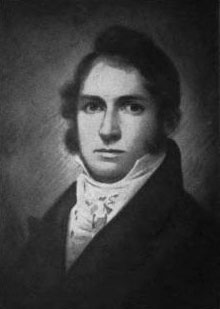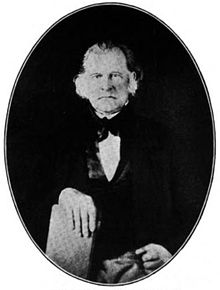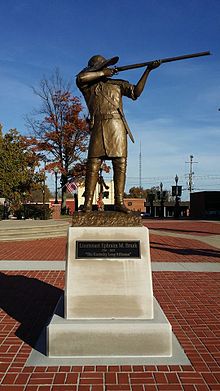
Muhlenberg County is a county in the U.S. Commonwealth of Kentucky. As of the 2020 census, the population was 30,928. Its county seat is Greenville and its largest city is Central City.

McLean County is a county located in the U.S. state of Kentucky. As of the 2020 census, the population was 9,152. Its county seat is Calhoun and its largest city is Livermore. McLean is a prohibition or dry county. McLean County is part of the Owensboro, KY Metropolitan Statistical Area, which has a population of some 114,752.

Central City is a home rule-class city in Muhlenberg County, Kentucky, in the United States. The population was 5,819 at the 2020 census. It is the largest city in the county and the principal community in the Central City Micropolitan Statistical Area, which includes all of Muhlenberg County.

Greenville is a home rule-class city in Muhlenberg County, Kentucky, in the United States. It is the seat of its county. The population was 4,492 as of the 2020 census.

Ephraim McDowell was an American physician and pioneer surgeon. The first person to successfully remove an ovarian tumor, he has been called "the father of ovariotomy" as well as founding father of abdominal surgery.
John Hardin was an American soldier, scout, and frontiersman. As a young man, he fought in Lord Dunmore's War, in which he was wounded, and gained a reputation as a marksman and "Indian killer." He served in the Continental Army during the American Revolutionary War, where he played a noteworthy role in the American victory at Saratoga in 1777. After the war, he moved to Kentucky, where he fought against Native Americans in the Northwest Indian War. In 1790, he led a detachment of Kentucky militia in a disastrous defeat known as "Hardin's Defeat." In 1792, he was killed while serving as an emissary to the Natives in the Northwest Territory.

The Tullahoma campaign was a military operation conducted from June 24 to July 3, 1863, by the Union Army of the Cumberland under Maj. Gen. William Rosecrans, and is regarded as one of the most brilliant maneuvers of the American Civil War. Its effect was to drive the Confederates out of Middle Tennessee and to threaten the strategic city of Chattanooga.

Ken Rex McElroy was an American criminal and convicted attempted murderer who resided in Skidmore, Missouri, United States. He was known as "the town bully", and his unsolved killing became the focus of international attention. Over the course of his life, McElroy was accused of dozens of felonies, including assault, child molestation, statutory rape, arson, animal cruelty, hog and cattle rustling, and burglary.

Alney McLean was a United States representative from Kentucky. McLean County, Kentucky, is named in his honor.

The 2008 United States Senate election in Kentucky was held on November 4, 2008. Minority Leader and incumbent Republican U.S. Senator Mitch McConnell won re-election to a fifth term. Although Barack Obama lost Kentucky by a 16.22% margin to John McCain in the concurrent presidential election, McConnell more narrowly kept his seat with a 5.94% margin against businessman Bruce Lunsford. This was a greatly reduced margin from when he won re-election in 2002 with a 29.4% margin.

Edward Rumsey was a United States representative from Kentucky.
The M25 Sniper Weapon System is a joint venture precision rifle built for the U.S. Army Special Forces and the U.S. Navy SEALs. It was originally developed by the 10th Special Forces Group, based at Fort Devens, Mass., to fulfill a requirement for a sniper rifle based on a match grade M14 that satisfied the requirements of the Army Special Forces and the Navy SEALs.
Philip Alston was an 18th-century Spanish-American counterfeiter, both before and after the American Revolution. He operated in Virginia and the Carolinas before the war, and in Kentucky and Illinois afterward. He was associated with Cave-in-Rock and his son, outlaw Peter Alston, and counterfeiter John Duff. He was an early American settler in Natchez, as well as in the Cumberland and Red River valleys in Kentucky and Tennessee.

"The Hunters of Kentucky", also called "The Battle of New Orleans" and "Half Horse and Half Alligator", was a song written to commemorate Andrew Jackson's victory over the British at the Battle of New Orleans. In both 1824 and 1828 Jackson used the song as his campaign song during his presidential campaigns.
Jonathan Lee Hensley was an American radio personality and artist manager. Best known as the host of the nationally syndicated Are You Ready for the Country? radio program, Hensley interviewed more than a hundred celebrities and entertainers from the launch of his radio career in 2002 until his death in 2015.

A sharpshooter is one who is highly proficient at firing firearms or other projectile weapons accurately. Military units composed of sharpshooters were important factors in 19th-century combat. Along with "marksman" and "expert", "sharpshooter" is one of the three marksmanship badges awarded by the United States Army and the United States Marine Corps. The United States Navy and the United States Coast Guard use a ribbon with an attached "S" device to note a sharpshooter qualification.
The Ferguson rifle was one of the first breech-loading rifles to be put into service by the British military. It fired a standard British carbine ball of .615" calibre and was used by the British Army in the American Revolutionary War at the Battle of Brandywine in 1777, and possibly at the Siege of Charleston in 1780.
Rumsey is an unincorporated community in McLean County, Kentucky, United States.

The Muhlenberg County Courthouse, located at 100 S. Main St. in Greenville, is the center of government of Muhlenberg County, Kentucky. Built in 1907, the courthouse was Muhlenberg County's third permanent courthouse since the county's creation in 1798. Louisville-based architects Kenneth McDonald Sr., and William J. Dodd – among the most prominent architects in the region at the turn of the 20th century – designed the courthouse. Their Beaux-Arts design features a recessed entrance pavilion set atop a flight of ten stairs and topped by a portico - which exhibits elements of the Neoclassical style - supported by columns. The building is topped by a Baroque octagonal cupola with a clock face on four sides. The interior floor plan is symmetrical.
Frank Wesson rifles were a series of single-shot rifles manufactured between 1859 and 1888 in Worcester, Massachusetts. They were purchased by many state governments during the American Civil War, including Illinois, Indiana, Kansas, Kentucky, Missouri, and Ohio. They were one of the first rifles to use rimfire metallic cartridges.












